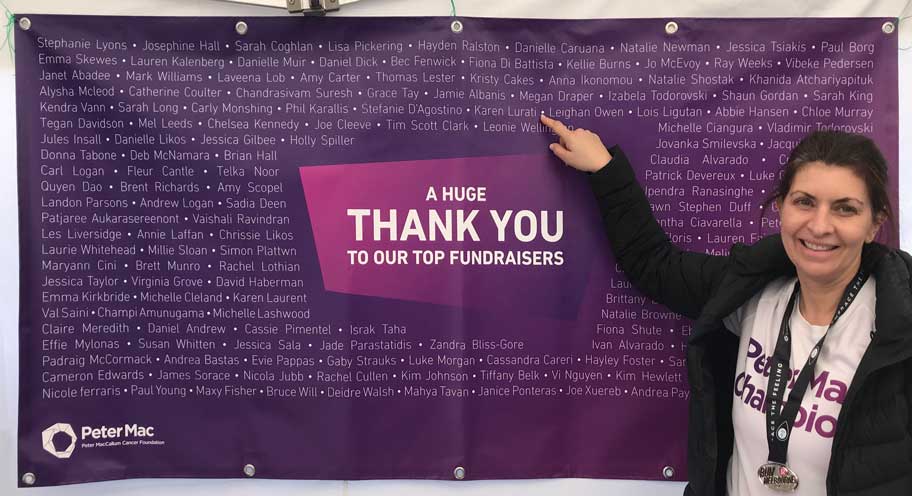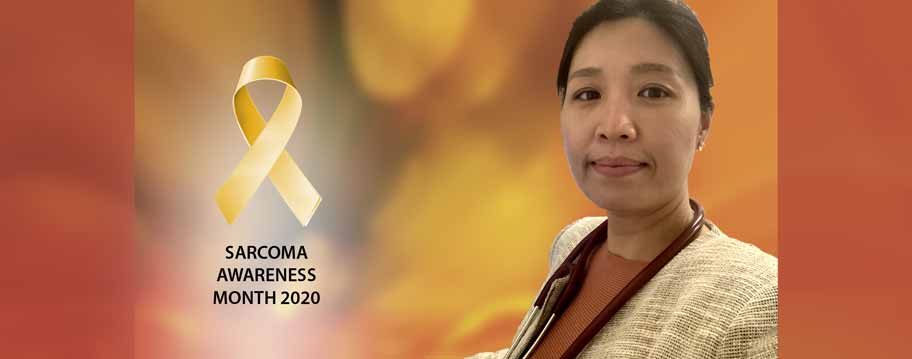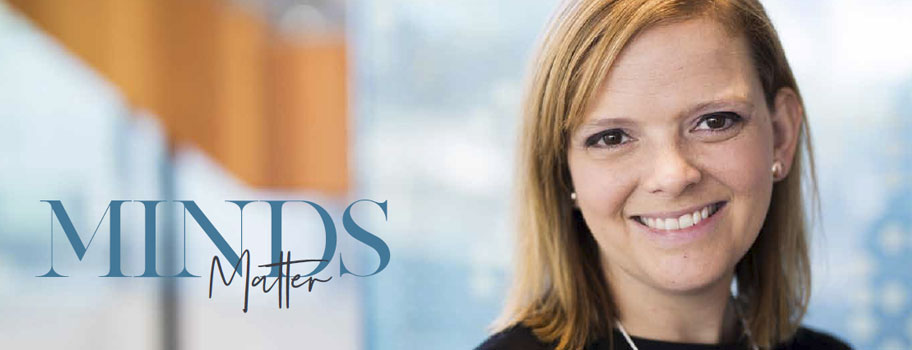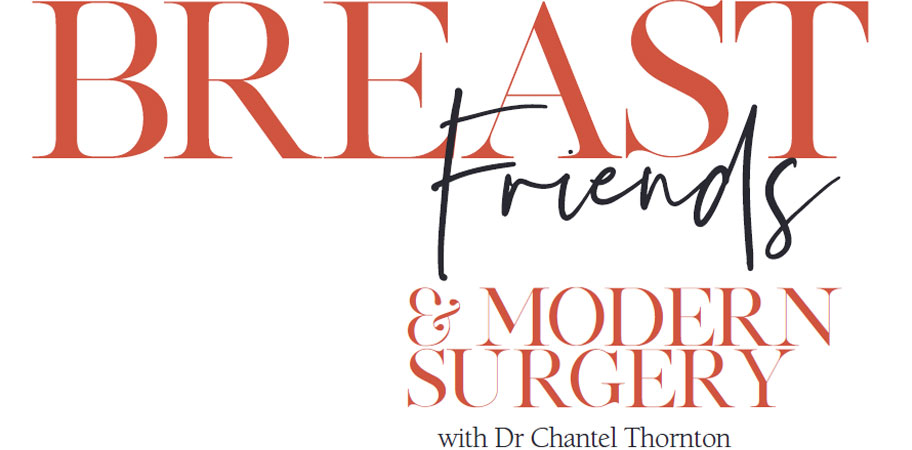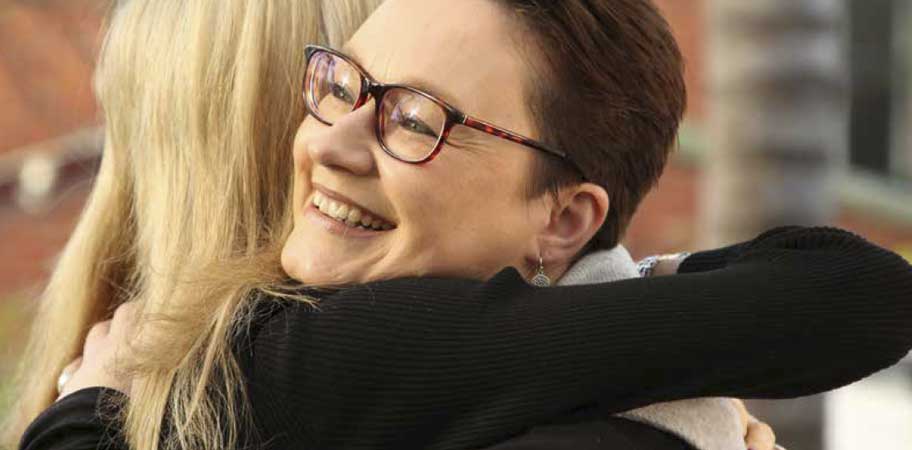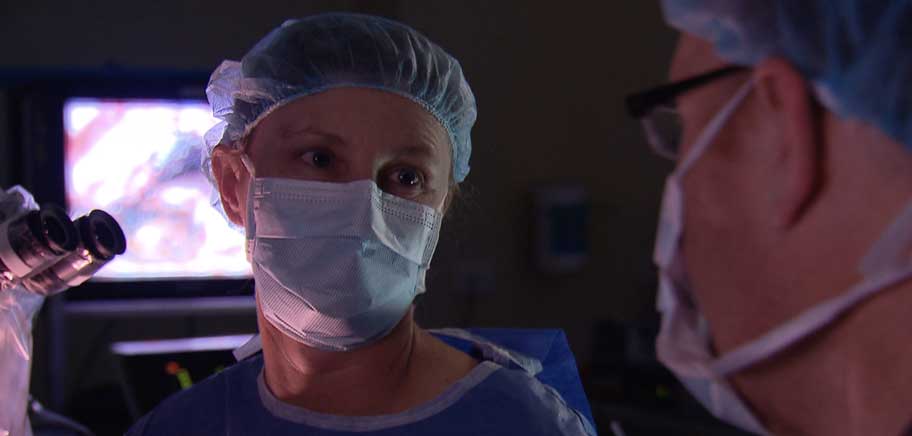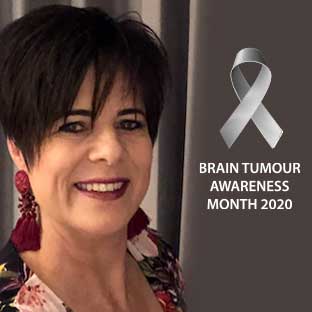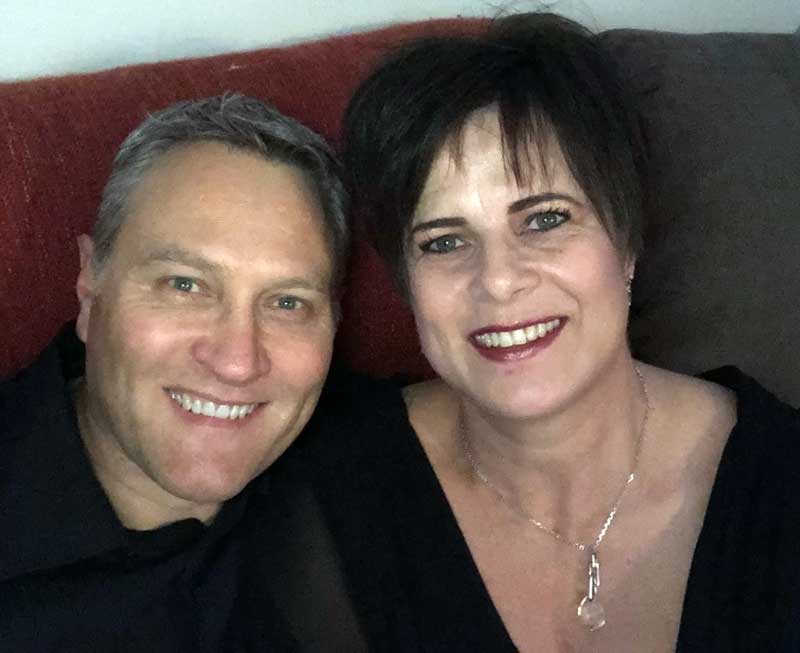The following article features in Issue One of the ST BREAST magazine.

BEFORE, DURING AND AFTER BREAST CANCER
Good nutrition can impact breast cancer treatment tolerance and recovery,1 as well as reduce the risk of recurrence1,2 and improve long-term health, according to Accredited Practising Dietitians (APDs) Lauren Atkins and Elise Den. The pair, who co-founded OnCore Nutrition two years ago, also note that research suggests as many as 30-35% of cancerrelated deaths are linked to diet.3
Today, they’re passionate about helping patients live well before, during and after cancer therapy, and have so far supported thousands of breast cancer patients nationally and internationally. OnCore Nutrition is based in Victoria, however Lauren and Elise also offer telehealth and Skype-based consultations.
They are involved in the education and training of allied health professionals across multiple universities in Melbourne, and have presented and published their research and other projects at national and international conferences and in respected journals.
WE ASKED THEM TO ADDRESS SOME OF THE MOST COMMON QUESTIONS RAISED BY BREAST CANCER PATIENTS
Do I need to follow an alkaline diet?
As cancer dietitians, we often get asked if the alkaline diet can cure or prevent cancer. The short answer is no. We wish it was that simple. The theory behind this claim stems from the concept that cancer only grows in acidic environments. Therefore, make everything alkaline and you’re good as gold. Rejection, your honour!
Comprehensive reviews have been conducted and no direct link has been found between diet-induced acidosis and cancer. We know that food pH does not influence blood pH. Normal body tissue has a slightly alkaline pH of 7.4, meaning that, if this theory was correct, cancer wouldn’t grow in any of these tissues. Cancer cells can grow in alkaline environments too. While it is accurate to say that tumours grow more aggressively in acidic environments, the tumours actually cause this acidity themselves.
Cancer cells can’t thrive in an overly alkaline environment, but neither can any of the other cells in our body.
Do I need to give up chicken because of the hormones?
Absolutely not! Lean poultry has been shown to be protective in the context of breast cancer.4 You need to remember that hormones have been banned in Australian chicken production for decades, and this means chicken is absolutely safe to eat.5
Do I need to avoid soy products because of the oestrogen?
Put simply, no. Women can still consume products like soy milk and tofu when they are being treated for breast cancer. 6 Most observational studies indicate that consumption of soy products may actually reduce the risk of developing hormonally driven cancers such as breast, prostate, or gynaecological cancer. This might be because the isoflavones found in soy products can actually block the more potent natural oestrogens in the blood. Soy consumption has been linked to a longer lifespan after a breast cancer diagnosis. In a review of five long-term studies, women who ate soy after diagnosis were 21% less likely to have a recurrence of cancer and 15% less likely to die than those women who avoided soy.6,7
What we do encourage is that you don’t go from 0 to 100 or from 100 to 0. So, if increasing your soy intake, do so moderately, starting for example with tofu or tempeh a couple of times per week and increase that over a few weeks. If you are currently including a regular soy intake in your diet, and would like to cut down, try to reduce it gradually.
Is it common to gain weight during breast cancer treatment? How much weight gain is ‘average’?
It is common to experience weight change during breast cancer treatment. Everyone is different, however some women will gain weight and others will lose weight. A weight change of 5-10% either way can have a profound impact on a woman’s health, therefore it is important to seek support from a specialised oncology dietitian who can provide tailored and specific nutrition interventions.
What has caused my weight gain during my breast cancer treatment? Is it reversible, or is it something I have to accept? Will diet and exercise be enough to reverse this?
There are many reasons why weight gain occurs for women undergoing breast cancer treatment.
Some combinations of chemotherapy drugs can bring on hormonal changes that trigger premature menopause.
With this may come a slowed metabolic rate, and a change in body composition. The use of corticosteroids can also predispose women to weight gain. These drugs are necessary to help reduce swelling, manage nausea and downregulate chemo-related toxicities. But steroids can also increase appetite and lead to muscle wastage and increase central adiposity (fat around your middle).
Fatigue is a common side effect of chemotherapy, which makes exercise and physical activity challenging. This in turn may lead to a reduction in incidental and conscious activity – sometimes leading to weight gain.
A woman’s food choices may also be affected by cancer treatment. It’s common to see changes in taste and appetite when women are affected by nausea and diarrhoea. This may lead to a tendency to eat more refined carbohydrates (like white bread and pasta) or convenient food options. Fatigue can also make food choices and meal preparation more challenging. Hormone-based therapies can also cause weight gain. These treatments can lower the levels of oestrogen and progesterone in the body, which can lead to body composition changes, with more fat and less muscle.
Having said all this, a tailored diet and exercise plan can most definitely help. Support from an oncology dietitian as well as an exercise physiologist or physiotherapist can assist with weight management and improvements in body composition.
What sorts of foods do I need to eat more of during treatment?
Eat more protein
High cell turnover (which is what happens during chemotherapy and radiotherapy) can increase energy and protein requirements, often elevating these to up to 125-150% of usual baseline needs. This means that someone undergoing high risk chemotherapy may need to eat enough protein for 1.5 people!
This can be really challenging, particularly if you are experiencing side effects like nausea. As a general rule, we recommend including a source of protein at each meal or snack – e.g. poultry, fish, meat, eggs, dairy products, nuts, seeds, tofu or legumes like chickpeas, lentils, kidney beans or cannellini beans. A serve is roughly the size of the palm of your hand. It’s also important to make sure you are eating 5 serves a day of vegetables and 2 serves of fruit.
Choose low glycaemic-index (GI) carbohydrates to reduce impact of fatigue
We’ve all felt the 3pm slump after a big bowl of pasta or fluffy white sandwich. Imagine the slump on top of chemotherapy-induced fatigue! Low GI carbohydrates will provide a sustained release of energy to avoid the blood sugar highs and lows. Opt for wholegrain or sourdough breads and cereals over white varieties. Choose basmati, wild rice, barley or quinoa over more refined grains, and go for sweet potato over white potato. You could also include legumes, nuts, seeds and full cream dairy.
Keep hydrated
Meeting your fluid needs post chemotherapy can help to flush it all through your system. The body is made up of 60% water and the brain more like 73%. Most will need about 35-45ml of fluid per kg body weight per day (e.g. someone who weighs 60 kilograms needs 2.1 litres per day) but check with your treating team in case your needs are different.
What else do I need to remember about my diet when going through chemotherapy?
Drug-nutrient interactions Some nutrients when taken in high doses can interfere with chemotherapy agents and medications. High doses of antioxidants, like vitamins A, C, E, selenium, copper and zinc, as well as other supplements such as whey protein, may increase our body’s own natural antioxidant levels. These can act to protect cells from damage, but during chemotherapy we are actively trying to damage cells.
High doses of these nutrients in the form of supplements and concentrated powders are best avoided, particularly alongside radiotherapy and some chemotherapy agents.
Zinc is important for taste
It could be worth checking serum levels if taste disturbances are ongoing. Always speak with your treating team before supplementing.
Vitamin E and glutamine
These supplements may be beneficial for chemotherapyinduced neuropathy. Speak to your dietitian, doctor or pharmacist to explore if appropriate for you.8, 9
Optimise medications
Many people don’t like taking medications but these can make a significant difference and if you need to take it, you might as well take it right! Some anti-nausea medications work best if taken 30 minutes prior to eating to help the stomach to empty efficiently. Digestive enzymes should be taken at the exact same time as a meal. If the timing of your medications isn’t right for you, you may not be reaping optimal benefit.
What sorts of foods do I need to eat less of during and after treatment?
- High glycaemic index carbohydrates, like white bread, refined cereals and short grain white rice.
- Refined carbohydrates and processed foods like cakes, biscuits, pastries, sweets, soft drink, juice and cordial.
- Foods containing trans-fats, like take-away foods and commercially prepared cakes, biscuits, pastries.
- Processed meats, like ham and salami.
- Overly-charred foods. This process can produce heterocyclic amines (HCAs) and polycyclic aromatic hydrocarbons (PAHs) that can increase cancer risk. 10
- Avoid probiotics when neutropenic.This includes probiotic supplements, kefir, kombucha, kimchi and yoghurt with added live cultures.1, 11
- Employ good food hygiene to avoid the risk of food-borne illness like salmonella. If you are immunocompromised, it is best to avoid foods that may harbour pathogens. This includes things like soft cheese, unpasteurised dairy, deli meats, raw or undercooked meat, poultry, seafood or eggs. Be careful to keep cold things below 5 degrees, consume leftovers within 24 hours and reheat meals until scorching hot.

I am having chemotherapy. What is causing the metallic taste in my mouth?
There are many different reasons that taste changes occur. Very simply, chemotherapy targets rapidly dividing cells which is great because cancer cells are rapidly dividing. However, this can also affect our healthy cells, including those that line our gastro-intestinal tract (including mouth).
Strategies that may improve taste during treatment include:
- Add herbs and spices to sauces to enhance flavour.
- People who are experiencing a metallic taste may benefit from using plastic or ceramic plates, cutlery and utensils.
- If you’re sensitive to smell, avoid cooked foods with strong aromas. Cold and room temperature options may be better tolerated.
- Ensure zinc levels are adequate as zinc deficiency can contribute to altered taste.
I am having trouble keeping food down during chemotherapy and I am losing weight. Is this a problem and do I need to eat a high fat diet to return to optimal health?
A high-fat diet is unlikely to be necessary. Focus on consuming high protein, good quality fats (mono and omega-3 poly-unsaturated fats), low GI carbohydrates as well as a variety of ‘whole foods’ like legumes, wholegrains, vegetables, fruits, nuts, seeds, dairy and lean meat, poultry and fish to maintain an optimal micronutrient profile. We say it is important to aim for nutritional adequacy overall. This may mean eating well when you are feeling well and trying to compensate in these times for periods when you will eat less. Small, frequent meals can help. Nourishing fluids (e.g. smoothies) are a good option for some patients and it is important to ensure these are nutritionally valuable rather than just energy or calorie-dense. We would suggest including things like nuts, seeds (try LSA mix from the supermarket!), avocado, yoghurt, spinach and berries in your smoothies.
Food fortification to maximise the nutritional content of every mouthful might be helpful. If weight loss is a problem, we suggest adding ingredients such as extra virgin olive oil, avocado, ricotta or nut butters to increase the energy and/or protein content of each mouthful without adding too much additional volume.
You should speak to your oncology dietitian or oncologist if you lose more than 5% of your body weight (e.g. if you weigh 60kg this is just 3kg).
What about supplements? Are there any you can recommend I take during breast cancer treatment and beyond to ensure I return to optimal health?
Our best recommendation is to aim to get sufficient macronutrients and micronutrients from whole foods to negate the need for supplementation. This is the recommendation of the World Cancer Research Fund also2. If there are particular inadequacies or deficiencies in your diet identified by an Accredited Practising Dietitian or on a blood test, individual supplementation may be recommended. We would encourage you to supplement only the nutrients that are lacking, rather than a broadspectrum supplement.
Having said this, a ginger supplement – 1.5g per day taken in a capsule – can reduce the severity of chemotherapy-induced nausea and vomiting.12, 13, 14, 15
Patients should be aware of the potential effects on blood thinning and blood glucose levels.16, 17, 18
Low Vitamin D levels may be associated with reduced outcomes. We recommend having your levels checked and supplementing as required.19,20
I am being treated with a therapy that is making me nauseous and causing diarrhoea. What foods do I need to avoid?
Some therapies can cause a number of side effects, including nausea, diarrhoea, loss of appetite, fatigue, muscle and joint pain, fluid retention and headaches.
There are a range of strategies to help manage these symptoms.
- Consume small and frequent meals.
- Sip on liquids (e.g. water or a ginger spritz)
- Eat bland foods (e.g. dry biscuits or toast) and try to do so often to avoid an empty stomach.
- Eating foods cold or at room temperature can minimise strong aromas.
- Avoid fatty, oily, rich foods.
- Have the foods you enjoy available.
- Eat in a positive environment.
- Use anti-nausea medication as directed by your oncologist. Ensure that you understand how these work so they can be best timed to your food intake (e.g. metoclopramide 30 minutes pre-meals)
- If your therapy is causing diarrhoea, consuming a modified fibre diet can assist in managing the severity of symptoms. Eat more soluble fibre and less insoluble fibre.
Foods to eat include the flesh of fruits and vegetables, legumes such as lentils and peas (avoid the skins or blend them, e.g. try hummus instead of whole chickpeas), wholemeal bread and cereals, grains such as barley, flaxseed, oatbran, psyllium and soy products.
If you are experiencing diarrhoea, you could try the following:
- Remove skins, seeds, stems and pulp from fruit and vegetable products.
- Choose wholemeal, sourdough or rye breads rather than wholegrain.
- Avoid whole nuts, seeds and dried fruits. Ground or paste varieties (e.g. nut butters, almond meal) are generally better tolerated.
- Be cautious of tough, stringy foods such as pineapple, celery and rhubarb.
- Cook high fibre foods well and chew thoroughly to reduce the digestive effort required by your gut.
For more information, go to www.oncorenutrition.com
Elise & Lauren
 |
Breast cancer treatment can be physically gruelling. The foods we eat can be a powerful tool when striving to improve or regain health both during and after therapy. Many women don’t know what or how much they should be eating, but building a nourishing meal really is simple. Click on the banner on the left to check out the specialised eating guide prepared by Oncore Nutrition. |
- Arends J, Bachmann P, Baracos V et al. ESPEN Guidelines on nutrition in cancer patients. Clinical Nutrition. 2016; 1-38.
- www.wcrf.org/dietandcancer/cancer-prevention-recommendations
- Anand P, Kunnumakara AB, Sundaram C et al. Cancer is a Preventable Disease that Requires Major Lifestyle Changes. Pharmaceutical Research. 2008 Sep 9;25(9):2097-2116.
- Lo JJ, Mark Park YM, Sinha R et al. Association between meat consumption and risk of breast cancer: Findings from the Sister Study. International Journal of Cancer. 2019 Aug 6;146(8):2156-2165.
- www.foodstandards.gov.au/
- Chi F, Wu R, Zeng YC et al. Post-diagnosis Soy Food Intake and Breast Cancer Survival: A Meta-analysis of Cohort Studies. Asian Pacific J Cancer Prev. 2013;14(4):2407-2412.
- www.aicr.org/patients-survivors/healthy-or-harmful/soy.html?utm_campaign=recharge&utm_ medium=email&utm_
- Pace A, Giannarelli D, Galiè E, et al. Vitamin E neuroprotection for cisplatin neuropathy: a randomized, placebo-controlled trial. Neurology. 2010 Mar 2;74(9):762-6.
- Brami C, Bao T, Deng G. Natural products and complementary therapies for chemotherapy-induced peripheral neuropathy: A systematic review. Crit Rev Oncol Hematol. 2016 Feb;98:325-34.
- www.wcrf.org/dietandcancer/exposures/meat-fish-dairy
- Redman MG, Ward EJ and Phillips RS. The efficacy and safety of probiotics in people with cancer: a systemic review. Annals of Oncology. 2014 Mar 11; 25:1919-1929
- Zick SM, Ruffin MT, Lee J, et al. Phase II trial of encapsulated ginger as a treatment for chemotherapyinduced nausea and vomiting. Support Care Cancer. May 2009;17(5):563-572.
- Levine ME, Gillis MG, Koch SY, et al. Protein and ginger for the treatment of chemotherapy-induced delayed nausea. J Altern Complement Med. Jun 2008;14(5):545-551.
- Pillai AK, Sharma KK, Gupta YK, et al. Anti-emetic effect of ginger powder versus placebo as an add-on therapy in children and young adults receiving high emetogenic chemotherapy. Pediatr Blood Cancer. Feb 2011;56(2):234-238.
- Ryan JL, Heckler CE, Roscoe JA, et al. Ginger (Zingiber officinale) reduces acute chemotherapy-induced nausea: a URCC CCOP study of 576 patients. Support Care Cancer. Jul 2012;20(7):1479-1489.
- Kleinschmidt S, Rump G, Kotter J. [Herbal medications. Possible importance for anaesthesia and intensive care medicine]. Anaesthesist. Dec 2007;56(12):1257-1266.
- Backon J. Ginger as an antiemetic: possible side effects due to its thromboxane synthetase activity. Anaesthesia. Aug 1991;46(8):705-706.
- Ojewole JA. Analgesic, antiinflammatory and hypoglycaemic effects of ethanol extract of Zingiber officinale (Roscoe) rhizomes (Zingiberaceae) in mice and rats. Phytother Res. Sep 2006;20(9):764-772.
- Mary J. Marian. Dietary Supplements Commonly Used by Cancer Survivors: Are There Any Benefits? Nutrition in Clin Practice. 16 August 2017
- Hauser K, Walsh D, Shrotriya S, et al. Low 25-hydroxyvitamin D levels in people with a solid tumor cancer diagnosis: the tip of the iceberg? Support Care Cancer. Jul 2014;22(7):1931-1939.
